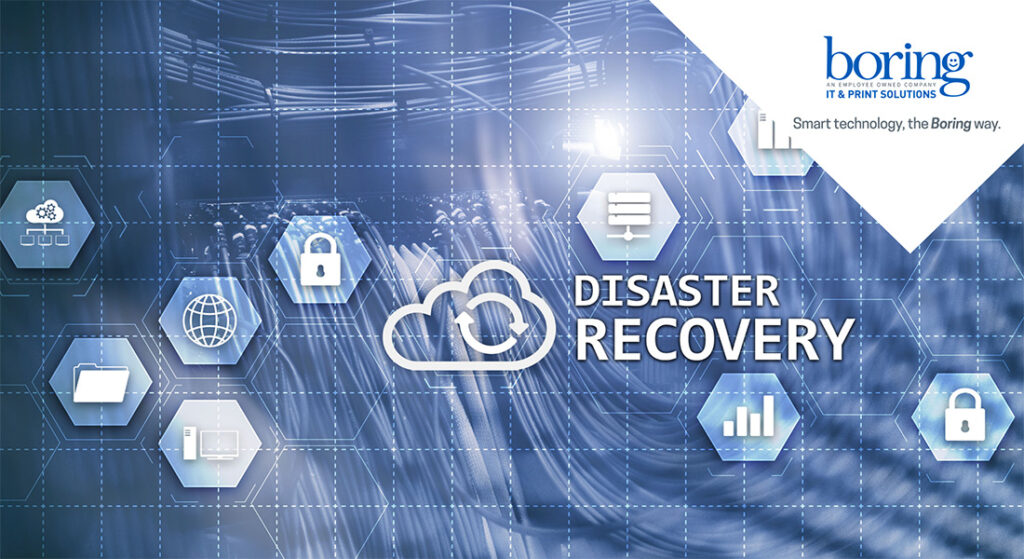Keep Your Data Safe From Phishing Attacks!

Cybercrime is on the rise, and hackers are using any opportunity to take advantage of an unknowing victim to gain access to personal information for financial gain. One commonly used tactic is phishing. Phishing messages are crafted to deliver a sense of urgency or fear with the end goal of capturing a person’s sensitive data and can result in wire transfer fraud, credential phishing, malware attachments, and URLs leading to malware spraying websites. Phishing scams are getting more sophisticated on a daily basis, thus harder to detect and avoid. Here are five different types of phishing attacks to avoid: 1. Spear Phishing Attackers pass themselves off as someone the target knows well or an organization that they’re familiar with to gain access to compromising information (e.g., credentials or financial information), which is used to exploit the victim. 2. Whaling Whaling is a form of spear phishing with a focus on a high-value target, typically a senior employee within an organization, to boost credibility. This approach also targets other high-level employees within an organization as the potential victims and includes an attempt to gain access to company platforms or financial information. 3. Mass Campaigns Mass phishing campaigns cast a wider net. Emails are sent to the masses from a knock-off corporate entity insisting a password needs to be updated or credit card information is outdated. 4. Ambulance Chasing Phishing Attackers use a current crisis to drive urgency for victims to take action that will lead to compromising data or information. For example, targets may receive a fraudulent email encouraging them to donate to relief funds for recent natural disasters or the COVID-19 global pandemic. 5. Pretexting Pretexting involves an attacker doing something via a non-email channel (e.g., voicemail) to set an expectation that they’ll be sending something seemingly legitimate in the near future only to send an email that contains malicious links. What to do if you think you’ve received a phishing email? First, to help identify it as a phishing email, check to see if the signed-by field was generated by a DomainKeys Identified Mail (DKIM) or a service. For example, if you received an email from name@datto.com, you would see a DKIM in the signature that looks like this: datto-com.20150623.gappssmtp.com. This is how all emails through a domain are processed. Emails shared through a service (e.g., Drive, Calendar, Dropbox, Box, etc.) do not have a DKIM. Instead, you would see the signature of the provided service (i.e., signed-by dropbox.com). If you receive a file, and it is not signed by google.com, gmail.com, dropbox.com, it is likely phishing – delete it immediately. It’s important to remain vigilant and proceed with caution in these circumstances. Source: https://www.datto.com/resources/phishing-attacks-how-to-recognize-them-and-keep-business-data-safe
Reimagining Business Collaboration

When all your employees are under the same roof, getting the group together to brainstorm ideas and solve big problems is an issue of packing all the people into the same conference room. But when your employees are spread across a city, country, or even the entire globe, how do you pull everyone together to collaborate? Technology has made the physical location of employees irrelevant to their productivity level—we can now access all corporate tools outside the office. But in the process of making it easier to recruit the best talent regardless of their proximity to the physical building that the company is housed in, we lost something that is inherent to the productivity of the entire workforce: the ability to work together as a single unit. ZAC, the newest member of the Zultys family of product, is a tool designed to help employees connect. By bringing all the functionality necessary to work together into a single application, you can put all your best brains into the same conference room—it just won’t be a physical room anymore. The possibilities are endless and the integration between the various methods of communication is infinite. A powerful team chat functionality hosts all the employees working on the same project in the same virtual conference room, and when conveying the ideas across with written correspondence becomes too difficult, getting all the employees together on a conference call doesn’t require trying to remember different phone numbers or emails to send the meeting invite to. All the contact info employees need is right there at their convenience, so that they can put their minds to use doing their job without wasting precious time on figuring out how to get in touch with their coworkers. Set up smaller collaboration hubs for more private conversation, accessible to only the people invited to this discussion, while more expansive projects can be discussed by huge groups. And on top of that, you still have access to all the call handling and call management functionality that have made Zultys Unified Communication Platform indispensable at corporations across the globe. ZAC specializes in enhancing productivity, by combining all methods of communication into a single application, one that is both intuitive and versatile and able to support the communication needs of any business. Technology is supposed to be making our lives easier, so make your business communication technology work for you! And ZAC is here to connect you and your employees together, to make tackling your hardest projects as easy as it would be if you were all sitting around that old conference room table. Contact us to learn more about how we can help you reimagine collaboration in your office! Source: Zultys Blog, Lina
A Smooth Transition Into Going Paperless

There are advantages to going department by department when you implement a document management system. Think of starting small as your “sandbox,” a development term for experimentation that confirms the direction you should be taking. Working through your first implementation project provides valuable information about priorities and processes that you can bring to your next one. Too much change at one time may initially overwhelm users. This is especially true if one person deals with multiple processes across departments. Your goals for the implementation give you an endpoint to reach for, but it can be more effective to take smaller, manageable steps toward that goal. Zero in on one department and go forward from there For most organizations, the accounting department offers a significant opportunity for savings of time and resources. Accounting still tends to be paper-centric. For example, processing incoming invoices is often done manually. This presents significant ROI potential because when you use document management to become more efficient at sending and collecting on invoices, it enables you to get paid more quickly. This results in improved cash flow. Automating these processes saves time as well and allows you to grow your business without adding staff. Document management ultimately works best when multiple departments are connected. Even when you start in one department, it’s important to create a plan to assess which other departments you will automate in the next project phase. Then you can develop a staggered implementation timeline for each department to “go live” while automating the next department is already underway. Find out why three DocuWare customers who implemented the solution in their accounting departments used the experience as a stepping stone for expanding the use of their document management systems. Please note that these are not our clients, but they use one of the document management systems that we use. Propel Schools bring high-performance educational options to their students Propel Schools operates 13 charter schools located in and around Pittsburgh. Today, Propel’s invoice approval workflow is fully automated. Staff at each school scans their documents into DocuWare. The Accounting Department accesses the documents online and performs a 3-way match. Then they quickly route the invoice out for approval. Automations save time in other ways as well. Accounting staff no longer call individual schools to track down invoices that were “lost” in someone’s in-basket. Efficiency is further improved because everyone involved in the workflow can view supporting documents online. In the past, all documentation was stored in physical files that were only accessible in the central business office. Propel’s new invoice approval process is transparent, so staff can easily determine which invoices are outstanding and track their status. With DocuWare in place, invoices never need to be recopied and resent; a quick email reminder is all it takes to move the process along. Approval time has dropped from up to two weeks to just a few days. “DocuWare is helping our business office run much smoother,” Business Manager Darryl Robinson says. “I love this program because it provides my staff with quick, easy access to the information we need and that makes our department look good,” The new electronic invoice approval workflow was so successful that Propel is planning to expand DocuWare to manage student and HR records. Document management is essential at Corestruc Corestruc is the flagship company of a conglomerate that includes eleven individual companies and 250 employees. All are active in the concrete, real estate and agricultural industries in South Africa and neighboring countries. Corestruc designs and manufactures pre-cast concrete structures that are used in public infrastructure and the private construction sector. A digital document management system helps coordinate all these corporate threads from their headquarters in Polokwane, located northeast of Johannesburg. Corestruc is benefiting from digitization, especially on the cost side. DocuWare not only significantly reduces processing times, but also improves the flow of information between administration and subsidiaries. As a result, only a fraction of the time is now spent between receipt of invoice and payment. Based on their positive experience, the company plans to use DocuWare in human resources as well. Shelter Products Automates Accounts Payable to Streamline Processes Headquartered in Milwaukie, Oregon, Shelter Products is a distributor of lumber, plywood and other building materials. With sales offices in six states, the company supplies premier building contractors across the country, specializing in just-in-time shipments for projects including multi-family housing, assisted living, hotels and motels. Installing DocuWare solved several industry-specific challenges. “In the construction business, our customers get a draw from their bank loans once a month,” IT director Colin McDonell explains. “Quick turn-around of invoices is critical. If we miss a cut-off by one day, we’re not getting paid for an additional 30 days.” The company has only a few days to take advantage of early payment discounts, and often missed that window due to lost or incorrectly routed paperwork. “We recently put in an automated invoice approval process that replaced the need for sign off on paper. Because we process 2,400 invoices a month, it was a pinch point,” McDonell says. Now invoices are approved within three hours, rather than possibly sitting on someone’s desk for a day or two. “DocuWare’s Workflow Manager has been transformational in the Shelter Products business. While not part of our initial evaluation, it has quickly become the key piece of the puzzle. After Accounts Payable, rolling it out to the Credit and Legal departments is the next step.” 4 Tips for department-by-department implementations Invite future users to your first training sessions: Once you’ve introduced the solution in one department, invite representatives from other departments to sit in on training. They’ll get first-hand experience with the solution. This will get them excited about how document management can positively impact their work lives. Hold a review and optimization workshop and invite business leaders from other departments to attend: Bring your existing users together to talk about what works and doesn’t, and how to apply these successes and challenges in the future. This workshop also serves as a showcase for other departments.
Common Cybersecurity Threats for Small to Medium Sized Businesses

October marks the beginning of Cybersecurity Awareness Month, a month-long campaign to raise awareness of the need for a collective and proactive approach to cybersecurity. The campaign comes when the threat to businesses is greater than ever. According to the FBI, since the beginning of the pandemic, there has been a 300% increase in reported cybercrimes, with a majority targeted at small-to-medium-sized businesses (SMBs). This increase is likely due to the global shift to remote work, with employees accessing company infrastructure from their home network and IT teams maintaining it remotely. Common Threat Vectors for SMBs A threat vector is a pathway or method used by an attacker to access the target system. These attackers can then steal data, information, or money from individuals or businesses by exploiting these vulnerabilities and gaining access to the system, such as the company’s IT infrastructure or employee’s email). Once they gain access, they are able to remotely control the IT infrastructure, install malware or ransomware, or steal data and other resources. Weak or Compromised Credentials Bad actors obtaining access to user credentials is one of the most common ways for cybercriminals to access target systems. There are several ways for them to obtain these credentials, such as when users fall victim to phishing attempts and provide their usernames and passwords to authentic-looking websites or use common/weak passwords that can be easily guessed. However, it is not only users who can have their passwords compromised. Network devices and servers also have credentials that can be compromised, where one compromised server can allow machine-machine movement throughout the network. To help avoid this risk, make sure that effective password policies are in place to avoid weak/common passwords and usernames, and enable multi-factor authentication (MFA) to reduce the possibility of breaches. Malicious Insiders A malicious insider is usually an unhappy employee who aims to sabotage or damage the organization that they work for. This type of threat is particularly difficult to protect against as employees need access to critical systems and sensitive data in order to operate the business. An employee with bad intentions can potentially disrupt business operations with actions such as deleting critical data or backup or providing secret information to a competitor. To try to mitigate this threat, limit access to critical systems to a minimum number of employees, monitor data and network access, and keep frequent backups of critical infrastructure Phishing Emails & Ransomware Phishing is a tactic used by cybercriminals to gain access to users’ credentials, banking details or to convince users to download potentially malicious malware or ransomware onto their machines. Many phishing emails share common features, such as attention-grabbing offers and statements, portraying a sense of urgency, and unexpected attachments. Even attachments with familiar file types should not be clicked on unless the authenticity of the sender is known, as it may contain viruses like ransomware. Ransomware is a growing concern for SMBs. Not only is ransomware becoming more and more prevalent, but the ransom to be paid is increasing as well. There are numerous ways ransomware can infect a system, from phishing attacks that depend on user error to more targeted attacks that depend on exploiting vulnerabilities in a business’s network. In the fight against ransomware, it is important to keep operating systems and applications patched and up-to-date to minimize vulnerabilities—install proper antivirus software and implement a solution for business continuity to quickly failover in case of a ransomware attack. Focusing on Cyber Resilience It is almost impossible to eliminate these attack vectors completely. As user error is a large component of all these common threat vectors, cybersecurity measures alone are not enough. Implementing a proper cyber resilience strategy to quickly and effectively recover from attacks is the only way to ensure that your business does not become the victim of a cybercrime. Datto’s Unified Continuity solutions can enhance your cyber resilience strategy by providing point-in-time restores to quickly recover and minimize downtime from events like disasters, malicious insiders, and ransomware. Interested in learning more about our Cybersecurity solutions? Give us a call or shoot us a message here: https://boring.com/contact-us/ Source: Nina Novak, Datto Blog
Facts about Cloud Security And How You Can Protect Against Data Loss

As cybercriminals continue to take advantage of the public cloud in their attacks, Sophos commissioned an independent survey of 3,521 IT managers across 26 countries* to reveal the reality of cloud security in 2020. The 2020 cloud security reality The survey provides fresh new insight into the cybersecurity experiences of organizations using the public cloud, including: Almost three-quarters of organizations hosting data or workloads in the public cloud experienced a security incident in the last year. Seventy percent of organizations reported they were hit by malware, ransomware, data theft, account compromise attempts, or cryptojacking in the last year. Data loss/leakage is the number one concern for organizations. Data loss and leakage topped our list as the biggest security concern, with 44% of organizations seeing data loss as one of their top three focus areas. Ninety-six percent of organizations are concerned about their current level of cloud security. Data loss, detection and response, and multi-cloud management top the list of the biggest concerns among organizations. Multi-cloud organizations reported more security incidents in the last 12 months. Seventy-three percent of the organizations surveyed were using two or more public cloud providers and reported more security incidents as those using a single platform. European organizations may have the General Data Protection Regulation (GDPR) to thank for the lowest attack rates of all regions. The GDPR guidelines’ focus on data protection, and well-publicized ransomware attacks have likely led to these lucrative targets becoming harder for cybercriminals to compromise in Europe. Only one in four organizations see lack of staff expertise as a top concern despite the number of cyberattacks reported in the survey. When it comes to hardening security postures in the cloud, the skills needed to create good designs, develop clear use cases, and leverage third-party services for platform tools are crucial but underappreciated. Two-thirds of organizations leave back doors open to attackers. Security gaps in misconfigurations were exploited in 66% of attacks, while 33% of attacks used stolen credentials to get into cloud provider accounts. For the details behind these headlines, and to see how your country stacks up, read The State of Cloud Security 2020 report. Secure the cloud with Sophos However you’re using the public cloud, Sophos can help you keep it secure. Secure all your cloud resources. Get a complete inventory of multi-cloud environments (virtual machines, storage, containers, IAM Users etc.). Reveal insecure deployments, suspicious access, and sudden spikes in cloud spend. Learn more Secure your cloud workloads. Protect virtual machines, the virtual desktops running on those machines from the latest threats, including ransomware, fileless attacks, and server-specific malware. Learn more Protect the network edge. Secure inbound and outbound traffic to your virtual network, virtual desktop environments, and provides secure remote access to private applications running in the cloud. Learn more Protecting your data starts here We work with only the best, enterprise level cloud vendors to ensure your data is always secure and always available. Contact us to find out more. Source: Sophos.com, Rajan Sanhotra
Helpful Tips About Disaster Recovery

The Truth About Disasters They can happen to any business at any time and the downtime they cause is truly catastrophic, many of which never recover. The strength to avert disasters and effectively handle the ones that occur starts with knowledge. Downtime is Common 90% of companies experience some form of downtime, which may result in loss of data, security, productivity, and revenue. (Down) Time is Money An hour of downtime costs $8,000 for a small company, $74,000 for a medium company, and $700,000 for a large enterprise. Planning Ahead The most powerful and flexible disaster recovery plan is local virtualization for SMBs and enterprises with physical or virtual servers. Disastrous Situations Disasters that cause downtime may be a result of hardware failure, human error, software failure, or natural disaster. Recovery is Painful The average time it takes a business to recover from disaster is 18.5 hours, but 43% of companies never totally recover. What could happen? Disasters of all kinds cause downtime that is damaging to a business. Disaster planning must encompass disasters of all types and sizes: fires, floods, fraud, ransomware, cyber-attacks, power or IT system failure, human error, acts of terror, and other unthinkable scenarios. While the type of disaster varies, the impact is typical: data and operational downtime that is truly disastrous. The devastating effect of downtime caused by disaster include irreparable damage to data, reputation, customer relationships, income, and business vitality. The best offense is a good defense; you must protect your business by understanding your vulnerabilities, safeguarding against the risks, and preparing for the worst possible business disruption with a plan for business continuity and disaster recovery that will shield your data, protect your business, and keep your systems available and reliable no matter what happens. Solutions They can happen to any business at any time and the downtime they cause is truly catastrophic, many of which never recover. The strength to avert disasters and effectively handle the ones that occur starts with knowledge. Datto SIRIS Disaster Recovery as a Service (DRaaS) for local, virtual and cloud environments, within a single platform. SIRIS is the leading BCDR platform for businesses. Datto ALTO Datto ALTO is the only continuity solution designed specifically for small business. Using image-based backup and a hybrid cloud model, ALTO delivers enterprise-grade functionality at a small business price. Datto NAS Data backup, recovery and business continuity for local, virtual, and Cloud environments, within a single platform. Keep every file safe and accessible with Datto NAS. How can I protect my business? Your disaster recovery plan must ensure that your entire business infrastructure can be recovered within seconds. You need a holistic, integrated disaster recovery plan that is reliable, simple, and quick. DRaaS offers a disaster recovery plan that is visible, scalable, and affordable. Business-critical data, systems, desktops, servers, and the entire infrastructure must be protected and recoverable. With secure local virtualization solutions, if disaster strikes, your entire infrastructure (physical or virtual) is virtualized instantly, empowering you to continue your business operations without losing any data, incurring any damage, or experiencing any downtime. Get DRaaS With Datto Datto SIRIS Disaster Recovery as a Service (DRaaS) for local, virtual and cloud environments, within a single platform. SIRIS is the leading BCDR platform for businesses. Explore Datto SIRIS Datto ALTO Datto ALTO is the only continuity solution designed specifically for small business. Using image-based backup and a hybrid cloud model, ALTO delivers enterprise-grade functionality at a small business price. Explore Datto ALTO Datto NAS Disaster Recovery as a Service (DRaaS) for local, virtual and cloud environments, within a single platform. SIRIS is the leading BCDR platform for businesses. Explore Datto NAS Need help learning about preparing for a disaster? Give us a call and we’ll examine your existing systems and see what will work best for you. Lakeland office: (863) 686-3167 | Tampa office: (813) 289-8805 Source: Datto.com
Is your business ready for Cloud Print Management?

How do you know if your business is suited to cloud print management? If you’re a smaller business, whether you want to track and manage or enable your printing, you have more options than running a print server on-premise. You can now manage your printing in the public cloud. But how do you know you’re suited to serverless printing? What’s the checklist? Oh you better believe that’s a hackneyed set-up for a listicle! 4 signs you’re ready for print management in the cloud 1. You’re already in the public cloud More specifically, you’re already using the public cloud for most of your organization’s work. Many SMB workplaces don’t start up with server racks for their data storage. They outsource to Google Drive or Dropbox. Likewise with the various software-as-a-service (SaaS) business applications found in the likes of Google Workspace and Microsoft 365. For these workplaces, it makes sense to also utilize cloud print management solutions. No point in just having a print server if all the rest of your work needs are satisfied by cloud-based software. 2. You’re new to print management For years you’ve had one MFP or a couple of small A4 printers used by a handful of employees in a modestly sized office. You know who’s coming and going, you know who’s printing what, you’re not printing anything more confidential than regular office documents. You’ve never felt the need for print tracking and monitoring. Especially when considering it means you have to shell out more cash for a print server and ongoing IT maintenance. Well, now is your time to dip your toe in the water. COVID-19 has accelerated adoption of cloud services for a variety of business worktools and print management is no exception. With cloud print management, you’re not purchasing any additional equipment or budgeting for resources – it removes the print server from the equation. That means no ongoing maintenance costs – that’s all-inclusive in the cloud print management SaaS model. Once upon a time, there was a barrier to print management for businesses that couldn’t justify the expenditure on infrastructure. That’s no longer the case with cloud print management solutions. 3. You’re embracing hybrid/remote working Covid-19 forced a change to professional life that was well overdue: you can be just as productive (if not more) working from home. Since undertaking remote working out of necessity during the pandemic, many businesses worldwide are adopting hybrid working models with a split between office and home working. With workers now coming and going from the office, this redefines many a workplace’s approach to printing. For end-users, sometimes they’ll need to press print in one location and collect their job at another. For IT teams and sysadmins, they require the ability to manage and track printing remotely and on location. With cloud print management and enablement, end-users can juggle between printing at home or the office. Similarly, sysadmins and IT staff can manage printing flexibly. 4. You’re an early tech adopter Print management in the public cloud isn’t new, but it’s still a maturing technology. It will take some time before cloud-native solutions reach the same feature-set and embedded functionality as on-prem and private hosted print management solutions. But for those futurists out there who love getting their hands on new technologies, cloud-native print management is your moment. Remember how smug your Gen Z coworker was when they were early on the TikTok hype train? That could be you! Interested in learning more about our Document Management solutions? Give us a call or shoot us a message here: https://boring.com/contact-us/ Source: Papercut Blog
Common Misconceptions About MPS

How many times have you heard the term “managed print services?” What images does it bring to mind? Many people write off MPS because they do not fully understand how it works and how it could scale for their business. A few common misconceptions about Managed Print Services: Managed Print Services refers to large-scale production. When you hear the term “Managed Print Service” or MPS, does the image of a large printer press come to mind? Are you thinking about letterhead, business cards and brochures? Don’t worry, it’s a common misconception, so let’s clearly define what MPS is and how a Managed Print Services environment can improve your office’s everyday printing, copying and faxing tasks. MPS is all about what and how your office prints on the printers that reside in your office(s). (Source: MPS Made Simple) You have to have new printers to use MPS. Whether the printers are old or brand new, you can definitely benefit from a MPS program. Supplies costs can be managed through a contract, and there is peace of mind that all support and services are being handled. Insight into your overall print and copy infrastructure is also something that anyone can benefit from. You need a lot of print and copy devices for MPS to be worthwhile. Although companies with bigger device infrastructures can most definitely take advantage of MPS, smaller companies may be able to, as well. In some cases, it may depend on whether your organization currently has paper intensive processes (e.g., small law firms, insurance agencies, or real estate sites) where output may need to be managed more effectively. The only way to find out if MPS is right for you is to ask an MPS service provider, like Boring. You can only have one brand of printer in order to use MPS. As a multi-line vendor, Boring’s Managed Print Services can incorporate any number of different products. Our priority is to create an optimally efficient print environment for our customers, regardless of brand. We sell and service printers and imaging systems from HP, Lexmark, Canon, and Konica Minolta. MPS is too expensive. Another common myth, this often puts companies off seeking managed print services. The reality is that MPS has been shown to actually save companies money. In comparison to traditional break it support, managed print solutions work on a monthly set rate, and with a great deal of saved resources through effective print management, companies can see a significant effect on their bottom line. Cost-savings is actually one of the primary reasons that companies consider MPS. The upfront costs of MPS are too high. In some cases, there are little or no upfront costs to get into a MPS program. In most cases, you will end up saving money that you were originally going to spend on your print and copy environments. (Source: What to Expect When Engaging in Managed Print Services) Equipment resellers or dealers can’t compete with equipment manufacturers on MPS. Resellers and dealers, like Boring, can provide competitive MPS programs similar to equipment manufacturers. Because we are not limited to one brand, Boring can create customized print environments that may satisfy your requirements better than single-line equipment manufacturers. Contact a Boring MPS Specialist for a personalized assessment to learn more. Working with multiple vendors keeps prices low. One of the benefits of MPS is to organize your fractured infrastructure under a single contract so that there are fewer vendors to manage. In addition, a single vendor can look at your entire infrastructure holistically to insure the most cost efficient environment. You can manage your own print resources without professional help. As another myth intended to try to save money, this route is never going to get results. Just as you wouldn’t try a DIY job to fix your broken tooth, you should not be trying to manage your printing yourself – unless you have the software, skills and experience possessed by professional MPS providers. Even if your printing is reduced, you will not be able to enjoy solutions such as print audit or print management software. You would also be forced to take time from your primary job role to deal with printer issues, which defeats the whole point in the long run. Rather than trying to manage your print fleet on your own, it would make much more sense to hire a managed print services provider, such as Boring, who can help you make the most of your printing practices, saving you money and time. (Source: Common Managed Print Services Myths) Would you like to learn more about Managed Print Services? Click here. To speak with aManaged Print Services Specialist863-686-3167or Contact Us
Five Things Your Company Needs To Do Now To Prepare For A Hurricane

June 1 marks the official beginning of the Atlantic hurricane season. Most people do some prepping on a personal level but is your business ready? Here is a list of five things your company needs to do in June before the first storm heads our way. Establish a plan. If you have not already created a disaster plan, now is the time to get it done. This plan needs to include the various scenarios you might encounter should you be at ground zero. Some of the items you need on this plan include: Will you need to close and evacuate? How do you notify your staff and customers? Do you have an alternate location to operate your business should your building be without utilities or be inhabitable? How will you access company data such as customer or patient records? Check your backups. It is so easy to get complacent with backups. Whether you are backing up to media or backing up to the cloud, now is the time to evaluate it. Not only do you need to ensure you are getting proper backups, you also need to ensure you are backing up everything critical. More than once, we have helped a company recover a backup only to learn a critical directory or database was left out. If you are still backing up to media, you need to do a test restore to be sure the backup is valid. Develop a communications plan. If there are power outages, landline phones, and cell phones may not work. If your business is mission-critical, you need to ensure you have an alternative means of communication such as satellite phones. Texting is also a great means of communication after storms. When bandwidth is scarce, you might not be able to make a phone call, but you will likely be able to send texts. Create an emergency response team (ERT). It is good to define a skeleton crew that can carry out your disaster plan. You must develop clear roles and responsibilities for each team member. You must also ensure the team has contact information and instructions on how to proceed should they be unable to reach someone on the ERT. Once the storm passes, you should have the ERT contact your entire staff to ensure they are safe and do not have any immediate needs. Be sure to not only train this team but consider doing some role-play exercises to be sure everyone is on the same page. Secure your building(s). Before leaving for the storm, it is smart to walk through your building and unplug any mechanical or computer equipment to protect it from surges. You may also want to consider covering key equipment with plastic tarps or bags in case of moisture intrusion. Also, if you have confidential paper files or portable media, be sure these are stored in a locked cabinet or safe. Should your building become insecure, you want to know your data is safe. Depending on your location, you may also want to install hurricane shutters. If you have a generator, be sure you test that early in the season and insure you have fuel ready. This is by no means an exhaustive list but should give most small businesses a good start. If you would like help developing a comprehensive list, we’d love to help. Contact us for a free consultation.
What is Business Continuity & Disaster Recovery?

What Is Business Continuity? Business continuity is the process, policies, and procedures related to preparing for recovery or continuation of business infrastructure critical to an organization after a natural or human-induced disaster. Whether the business is small or a global enterprise you need to know how you can keep going under any circumstances. Business Continuity Vs Disaster Recovery Disaster recovery is a subset of business continuity. While business continuity involves planning for keeping all aspects of a business functioning in the midst of disruptive events, disaster recovery focuses on the IT or technology systems that support business functions. A Complete Disaster Recovery Solution A proper business continuity solution should proactively protect clients’ systems and data against disasters of all type. An MSP should offer a business continuity solution that can rescue businesses and get them back online within minutes of any of these disasters: Hardware and software failures Natural disasters Unintentional human error or malicious actions Ransomware and other cybersecurity threats What to Look for in a Business Continuity a Solution? Here are some more key things to consider when looking for a solution: Hybrid cloud backup: A hybrid approach fixes the vulnerabilities that a cloud-only or local-only possess. Superior RTO and RPO: Think in terms of business continuity rather than simply backup, and calculate how much downtime your business can endure and still survive (RTO) as well as how much data you can afford to lose (RPO). Image-based backup: Make sure that the backup solution takes images of all data and systems rather than simply copying the files. Interested in learning more about our Business Continuity & Disaster Recovery Solutions? Give us a call or shoot us a message here: https://boring.com/contact-us/ Source: Datto Blog

